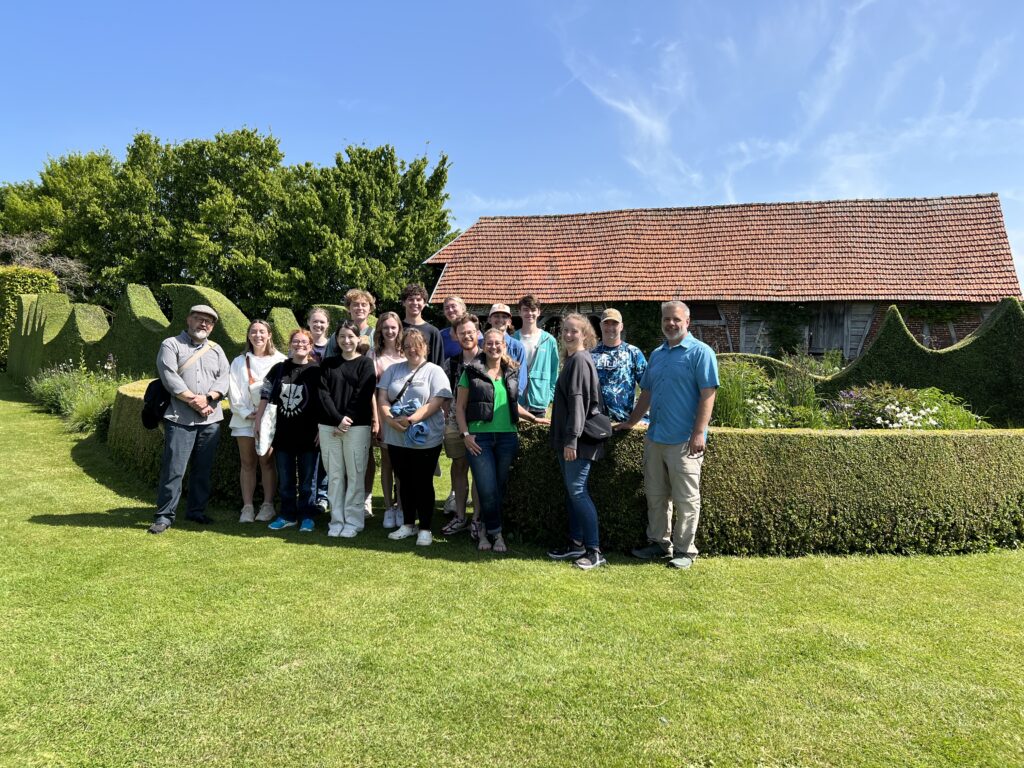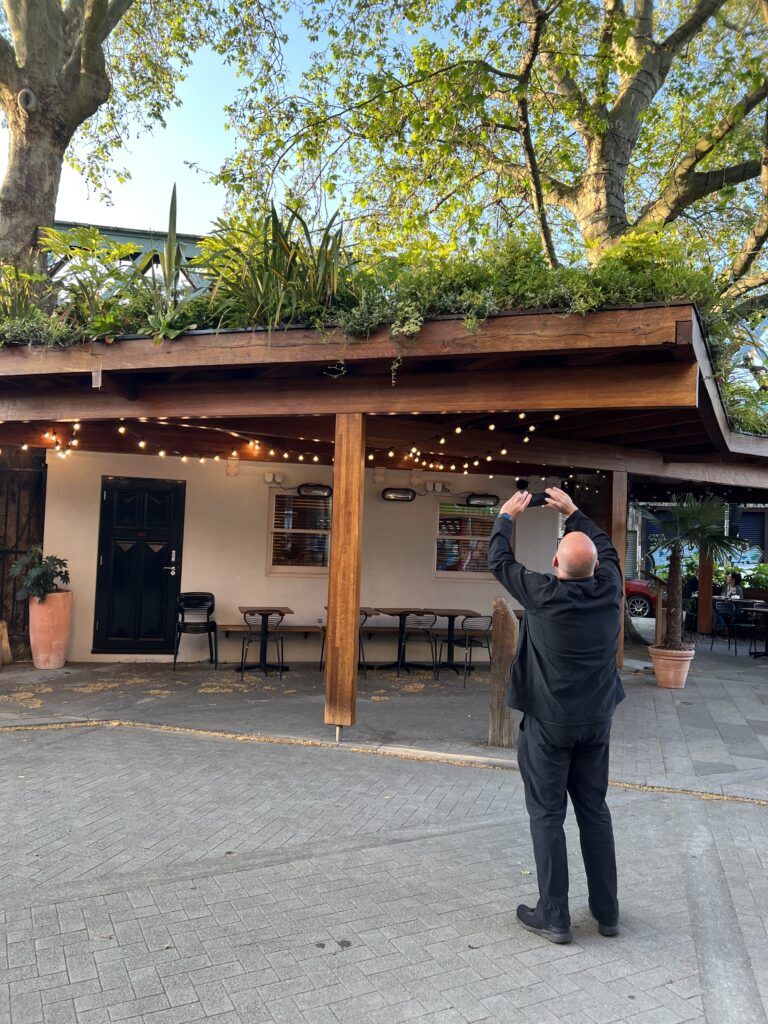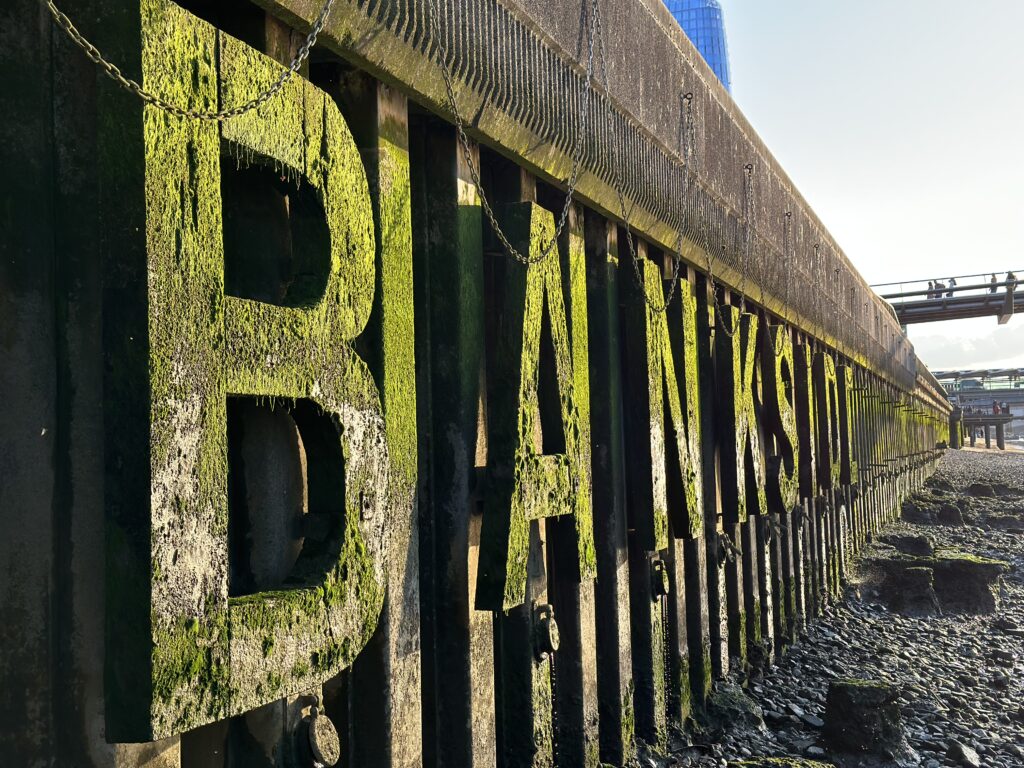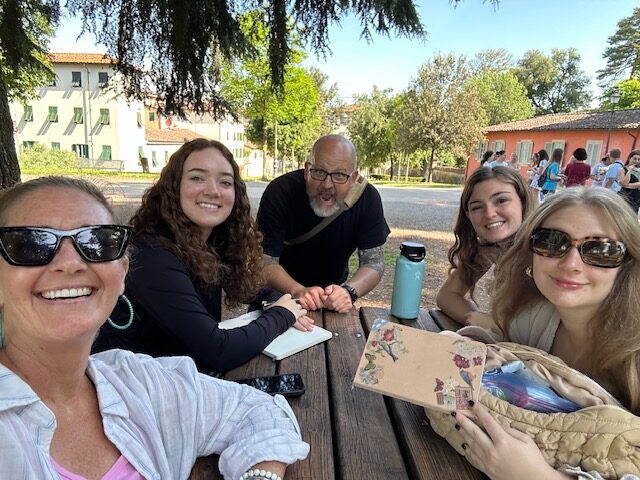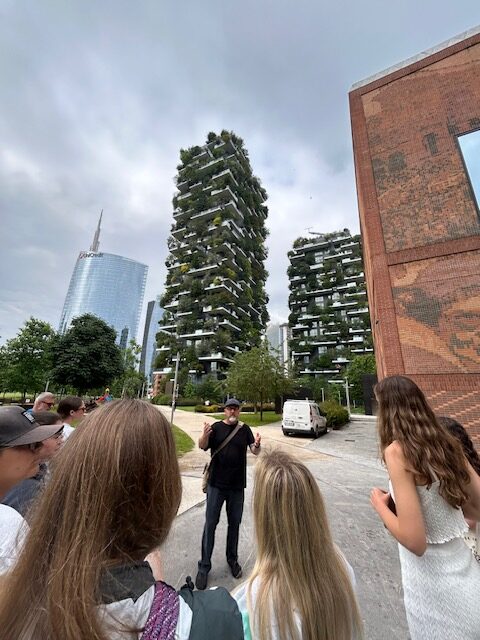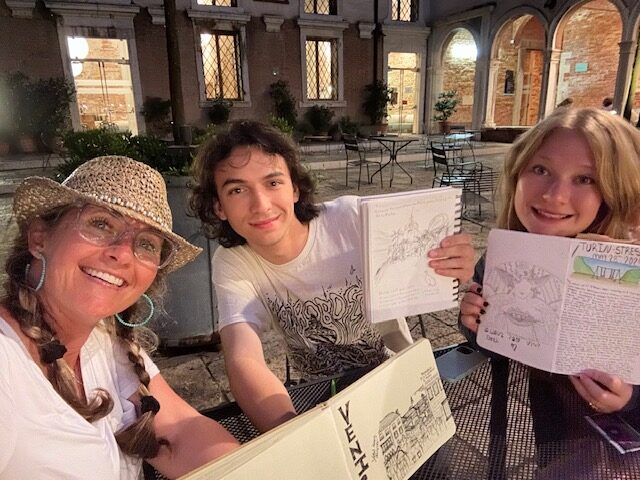Jardin de Plume: An amazing garden with a combination of whimsical formality in the form of highly manicured wave like hedges and beautiful wild meadow/pocket prairies bordered by well-manicured lawn. A contemporary garden that feels comfortable and personal. Meeting and talking with Sylvie and Patrick Quibel was lovely. They are very gracious and patient with our lack of French and the sheer number of students we brought with us.
Dover: Best Fish ‘n’ Chips of the trip at the White Horse Inn! The cliffs are everything you have ever been led to believe from movies or literature. Extremely impactful. The view from the cliffs back toward the castle at sunset was magical but it was particularly interesting as this was the castle was the site for the running of Operation Dynamo. The next day we left Dover on the ferry to head to Calais and Dunkirk. We arrived in Dunkirk and walked the beach on the anniversary of the approval of Operation Dynamo and the little ships rescue of British, French, and Belgian forces
The Beaches of Normandy and the US Cemetery: Utah and Omaha Beaches were incredibly moving. We were there and at the US Cemetery on Memorial Day and you felt it. For Andy and I this was the war of our grandfathers and grandmothers, great uncles and aunts. My grandfather was in the Pacific Theater but great aunt was a combat nurse in Europe and Andy’s grandfather was in the second wave. For us, growing up with the stories World War II made a huge impression. I wasn’t sure how the students would react to all of this. They were extremely respectful, moved, and eager to learn and experience to space. At one point at the US Cemetery an elderly veteran came out and played taps and there wasn’t a dry eye to be found. One of the truly profound visits of my life.
Mini-Reflection by Chelse Dyer
The 2024 study abroad trip was another chance for me to broaden my design horizons. One of the most challenging aspects of Italian gardens is the lack of flowers, at least less abundance. Most gardens we visited were largely green foliage, which pressed my design thinking in terms of texture. Rather than achieving interest through flower choices alone, the foliage created textural variety and interest in a way I had not seen before on that scale. The other notable observation allowed by the absence of beautiful flowers was the use of form and structure to create a different type of interest. This played well with the foliage texture in almost every garden we visited.
Another interesting aspect of this trip was the amount of history we were able to see. I am not referring necessarily to historical sites, although there were many. Instead, I am referring to the places with history behind them, pressing them forward into the future. How each was preserved as a time capsule, or honored as an evolving space, was very interesting. The opportunity to visit multiple ruin sites and multiple working academic botanic gardens was unique and provided a chance to compare and contrast one with another. I see the benefit of both preserving a space in time or continuing to honor history but also remain relevant today. Whichever direction, the design choice for each is important and must be decided upon from the beginning for a space to retain some sort of mission and identity. Otherwise, it becomes a hodge-podge collection that ultimately loses the history it is intended to preserve.
I am again grateful for an incredible opportunity to see a different part of the world than where I live. I never dreamed I would be able to study abroad, and to do it twice is something I do not take for granted. This study abroad was another opportunity to experience different landscape design choice in the context of different cultures, and I believe these experiences will help me become a better landscape designer.
